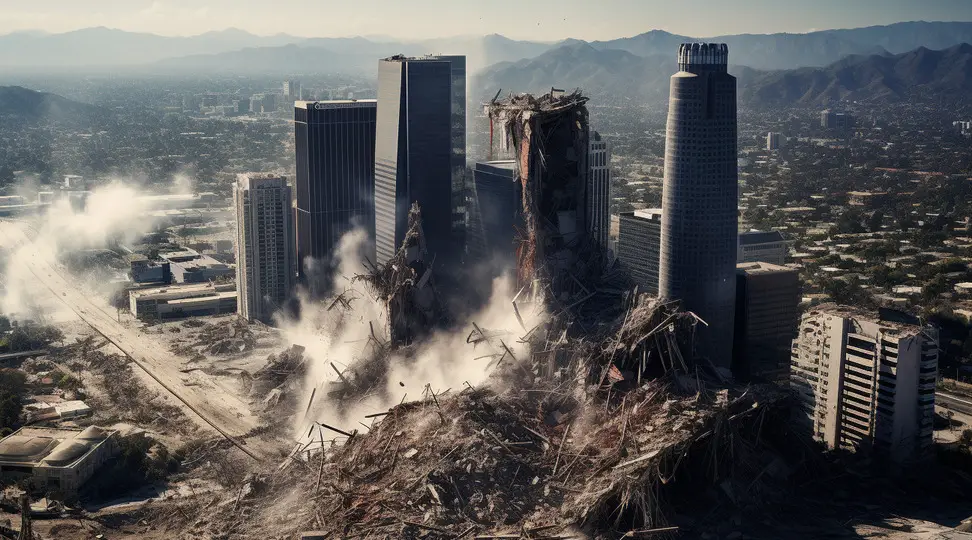Los Angeles, a sprawling metropolis in Southern California, is notoriously known for its susceptibility to earthquakes. This heightened risk is primarily due to the city’s geographical and geological features. Understanding why Los Angeles is prone to earthquakes involves delving into the science of tectonics and the region’s unique geological history.
Here are 7 things you need to know about LA earthquakes:

1. Tectonic Setting: The Pacific and North American Plate Boundary
The fundamental reason behind Los Angeles’s earthquake vulnerability lies in its position along the boundary of two major tectonic plates: the Pacific Plate and the North American Plate. The movement of these plates relative to each other creates significant geological stress. Specifically, Los Angeles is near the San Andreas Fault, a notorious transform fault where these two plates slide past each other. The movement along this fault line is the primary source of seismic activity in California.
2. The Complex Network of Faults
Beyond the San Andreas Fault, the Los Angeles area is riddled with a complex network of smaller faults. These include the Santa Monica Fault, the Newport-Inglewood Fault, and the Hollywood Fault, among others. The existence of these many faults increases the likelihood of seismic events, as movement along any one of them can result in an earthquake.
READ MORE: 25 Interesting Facts About Hail Storms and Why They Happen
3. Historical Earthquakes: A Record of Seismic Activity
Historically, Los Angeles has experienced several significant earthquakes. The 1994 Northridge earthquake, for instance, was a magnitude 6.7 event that caused extensive damage and loss of life. These historical precedents serve as stark reminders of the region’s seismic vulnerability and the potential for future earthquakes.
4. Geological Features: Sedimentary Basins
Los Angeles is situated on a series of sedimentary basins. These basins, filled with sediments washed down from surrounding mountains, can amplify seismic waves. During an earthquake, the energy waves travel through these softer sediments, increasing in amplitude and causing more intense shaking than would occur on firmer ground.
5. Human Factors: Urbanization and Infrastructure
The impact of earthquakes in Los Angeles is exacerbated by urbanization. High population density means that any significant seismic event has the potential to affect millions of people. Moreover, the city’s infrastructure, including buildings, bridges, and highways, must be specially designed to withstand seismic forces. Despite improvements in building codes and engineering practices, the risk remains significant due to older structures not built to current standards.
READ MORE: 25 Interesting Facts About Meteor Showers and Why They Happen
6. Preparedness and Mitigation Efforts
Aware of its seismic risks, Los Angeles has invested in earthquake preparedness and mitigation. This includes retrofitting older buildings, improving emergency response plans, and public education on earthquake safety. The city also employs advanced seismic monitoring systems to provide early warnings of impending earthquakes.
7. Conclusion
Los Angeles’s earthquake risk is a complex interplay of natural and human factors. Its location along a major plate boundary, the presence of numerous faults, geological features like sedimentary basins, and dense urbanization all contribute to its vulnerability. While the city continues to improve its resilience and preparedness, the threat of earthquakes remains a fundamental aspect of life in Los Angeles.
Understanding these risks is crucial for both residents and policymakers as they navigate the challenges of living in one of the world’s most earthquake-prone areas.

